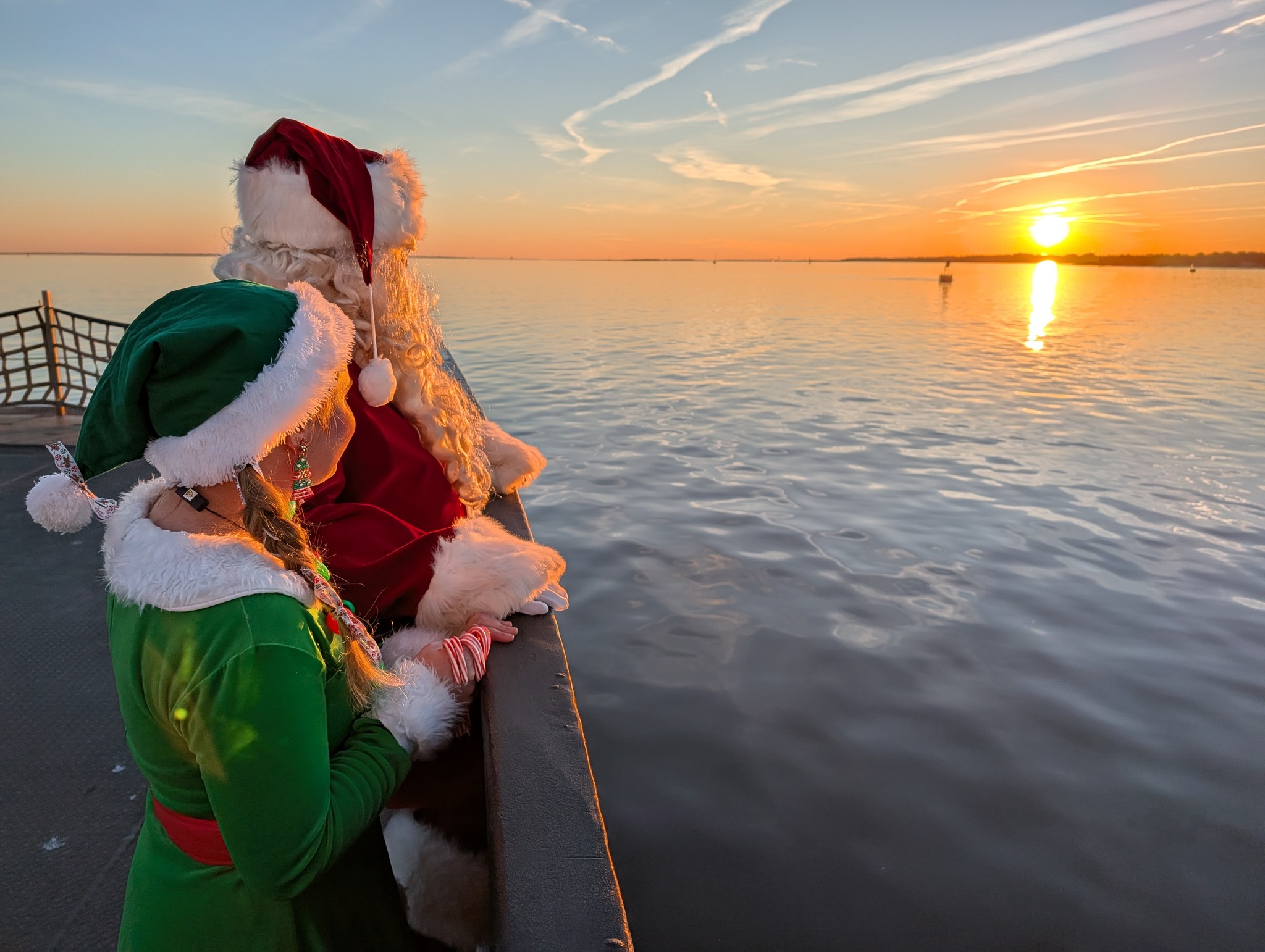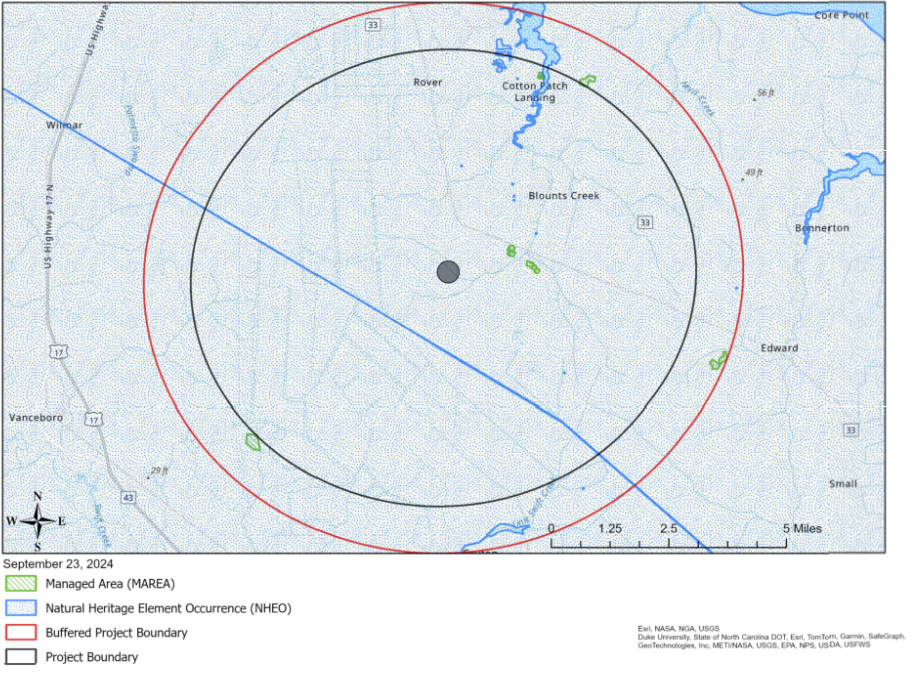
Contributed by the Jennette’s Pier staff
Along coastal Carolina’s beach towns, parks and residential areas, there’s a building movement to reduce artificial lighting that negatively impacts wildlife.
Supporter Spotlight
The North Carolina Aquariums are proud to be joining an ever-growing movement of migration to wildlife-friendly lighting, which often shine an amber hue.
In Nags Head, Jennette’s Pier has transformed its nighttime outline with new shielded fixtures with amber lighting, which ultimately creates less light pollution, according to Director Mike Remige.
“This specific color temperature is far less disruptive to insects, bats, birds, and, most importantly along the oceanfront, sea turtles,” he said. “It also reduces eye strain for people, better preserving our night vision.”
The idea of transforming lighting at the three aquariums and Jennette’s Pier has been developing for years, according to Dr. Carol Price, conservation research coordinator for the North Carolina Aquariums.
The North Carolina Aquariums’ Conservation Action Plan first prioritized the use of wildlife-friendly lighting at Aquarium facilities back in 2021, Price said.
Supporter Spotlight
In January 2023, sea turtle conservation groups from near and far assembled for the North Carolina Sea Turtle Symposium at the University of North Carolina Wilmington where light pollution was a “huge topic,” Price said.
Conservation leaders met again in March for the Southeast Regional Sea Turtle conference in Orange Beach, Alabama, where the topic was again discussed. The pair of meetings were an “inspirational call for action,” Price said.
Scientists have been collecting data on how light pollution impacts nesting turtles and their clutch of babies or hatchlings.
“We know nesting mothers may not nest where there’s light pollution,” Price added.
Another problem light pollution creates has to do with hatchlings making their dash to the sea.
When sea turtle nests erupt or “boil” with the tiny babies, the reptiles are hard-wired to use natural environmental cues, such as following the brightest horizon like the reflection of the moon and stars on the water and the downward slope of the beach, to find their way to the ocean.
Light pollution confuses this innate navigation system, resulting in hatchlings becoming disoriented and unable to reach the ocean before they fall prey to predators or succumb to dehydration, according to aquarist Michele Lamping with the aquarium at Pine Knoll Shores.
She has spent the last 20 years working with sea turtles, which include three endangered species: Kemp’s ridley, Atlantic hawksbill and leatherback, as well as two threatened species loggerhead and green sea turtles.
She has a passion for protecting them all and is currently involved in several important projects including the operation of the N.C. Aquarium at Pine Knoll Shores’ sea turtle rescue and rehabilitation operations.
She also is the volunteer coordinator for the Atlantic Beach Sea Turtle Patrols, which protects sea turtle nests.
Lamping has attended numerous lighting workshops and conferences. She says there’s a movement to curtail and negate harmful artificial lighting across all of North Carolina.
“We’re also trying to address negative impacts to wildlife from all lighting including residential, municipal and pier lighting along our beaches,” Lamping said. “Northwest Florida has already gone through lighting retrofits, now Southwest Florida is going through it too.”
Price and Lamping worked directly with Kristi Spohn of SESCO Lighting’s Florida Branch who crafted the plan for Jennette’s Pier’s refit. There is a growing need in North Carolina for industry leaders specializing in wildlife-friendly lighting, they said.
Price and Lamping said it took many steps and many years to get the project to this point. They each hope it will inspire other piers and properties to do the same.
Remige reports that a significant amount of unrestricted support funds from the N.C. Aquarium Society paid for the 200 new fixtures. These include low mounted pathways lights along with wall sconces, overhead recessed can lights as well as bollards and lampposts.
“Fortunately, the changeover came right when many of the old bollards and lampposts were starting to fail,” Remige said.
A certified electrical contractor plans to wrap up installation of Phase 1 soon, Remige noted. The 29 tall parking lot lights will be changed in Phase 2 of the project as more funds become available.
Remige said that the town of Nags Head has already deployed LED lighting at several crosswalks and sea turtle-friendly lights at several beach accesses.
“We’re all trying to make a difference for wildlife,” Remige added.
A handful of additional Carolina coastal towns and ocean piers such as Oak Island Pier also use wildlife-friendly lighting.
With 330 miles of sandy ocean beaches, it’s going to take a lot of work to protect sea turtles which have roamed the seas and nested on North Carolina beaches for 150,000 million years.







